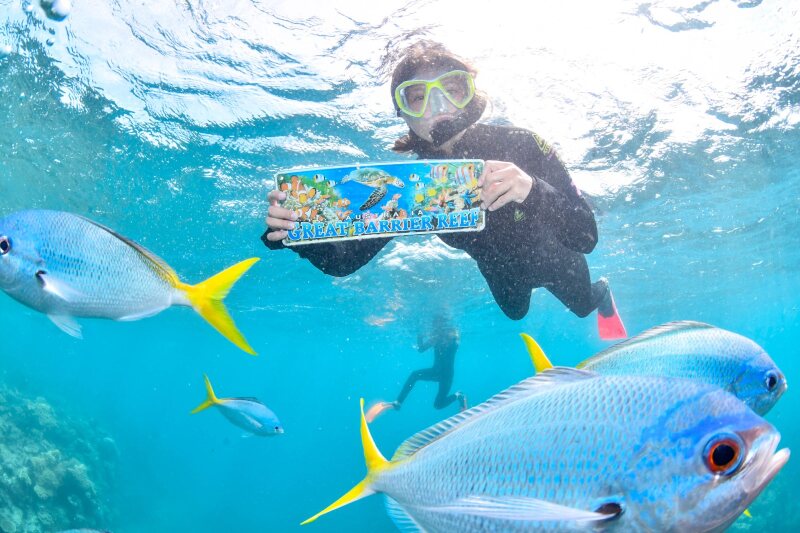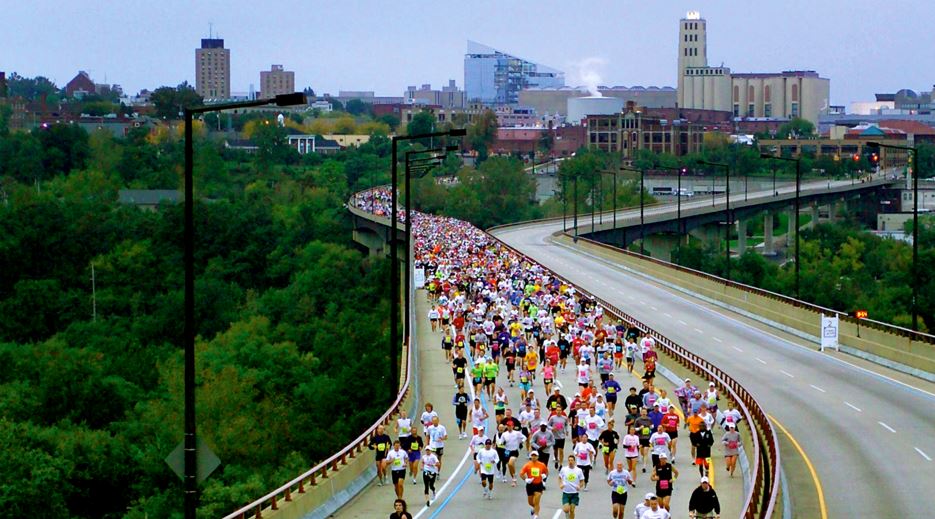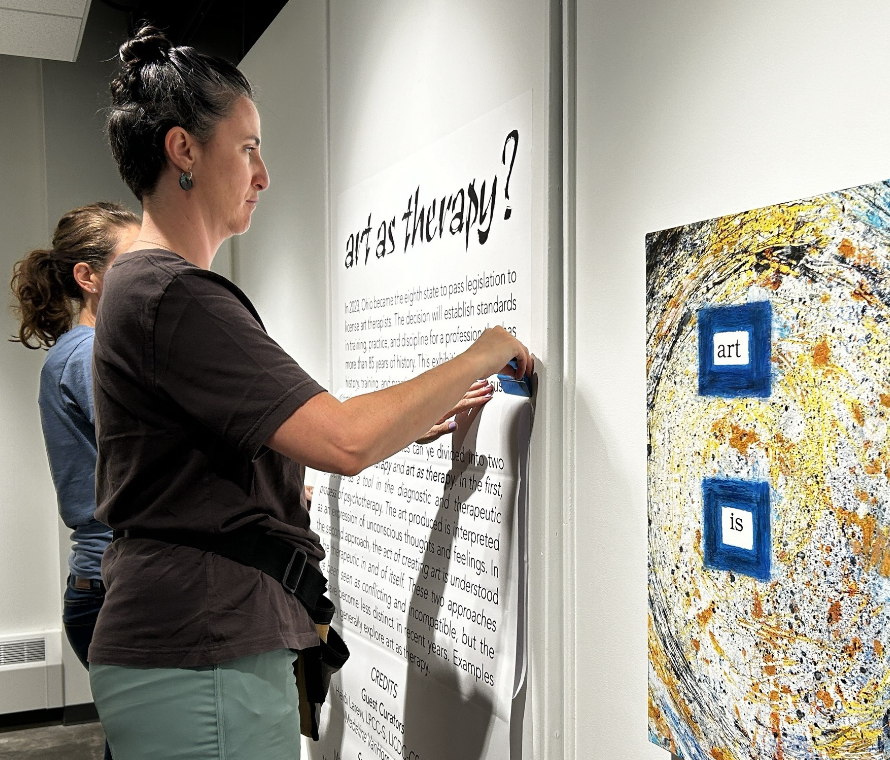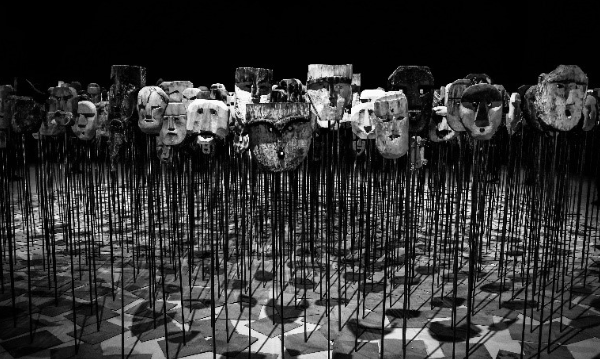By: Margaret Duff
This is what students heard murmured through Folk Hall last week, as the gallery was being prepared up for the new contemporary photography show. One could have been sure that this was not a photography show; a full-sized, stuffed wolf was indeed standing alert in the middle of the gallery. How was this not a sculpture show? Peeking further in past the workers, one could see a large piece that stretched across the whole wall of the lower atrium that was undoubtedly a printmaking piece. The supposed “contemporary photography” show almost appeared to be, instead, a strange juxtaposition of other art mediums.
“Photo Fictions: Staged, Constructed, and Altered Images,” which officially opens today (Thursday, September 22,) is exactly what the name says: contemporary photography that has been manipulated. This can occur in the studio, on site, on the computer, or in the darkroom. The possibilities keep growing for photographers to change their images as more processes are being discovered, and these processes allow photographers to create their own “fictions” and “realities.”
Some obvious examples of altered images that are found in this exhibit are Kehinde Wiley’s three pieces, “After Albrecht Durer,” “After Titian,” and “After Hans Holbein the Younger.” Many Akron students may recognize Wiley’s work from his show at the Akron Art Museum in the winter of 2009-2010. He places African-American figures in front of Martha-Stewart-esque, flowered backgrounds, and blends the backgrounds with the foregrounds. One of the more interesting aspects of his work is the fact that he poses his figures as the subjects of famous historical paintings from the Renaissance. This gives an empowering, almost spiritual feeling to the otherwise playful images.
Images courtesy Emily Poor. Story Continued Below.
Another popular series of images found in the exhibition are William Wegman’s photos of greyhound dogs. These are some of the most influential photographs of the last few decades.
When asked about the presence of Wiley and Wegman’s work in Folk, art student Leah Gay said, “There is work that I can recognize, even though I’m not a photo student. It’s exciting to see how different kinds of images can be considered photography.”
Of course, piece that initially grabs most visitors’ attention is “Coyote.” The photo is of a coyote in the snow, and the image is paired with the aforementioned stuffed “wolf” that leers at visitors as they enter the gallery. This accompaniment of a three-dimensional piece to a two-dimensional artwork is not uncommon in contemporary art, but is certainly unexpected at most photography shows. Yet, it illustrates something that most students are learning today; art is becoming broader and broader of a subject. Michael Williams, a junior chemical engineering student at Akron, works in the gallery, and has seen visitors’ reactions to the pieces. “Its really neat getting to see “Coyote,” walking in and it’s right next to the photo.”
When asked whether he liked working in the art gallery, despite the fact that he is a chemical engineering student, he replied, “It’s nice. I get to have both sides of things.” Many students on the main campus of the University have never visited Folk Hall, the art building, which is located on Exchange Street next to Galluchi. The broadening of the spectrum of the arts opens new doors to incorporating art into other studies, such as science, which is most certainly present in the “Photo Fictions” exhibit. Visiting art galleries such as UA’s Emily Davis Gallery, especially when they are displaying contemporary art shows, can help give students a broader perspective on issues and culture in our world today.
Photography, in fact, is one of the most scientific art processes available. This is visible in the different types of photography used in the Photo Fictions show. One piece that exemplifies this is Adam Fuss’s “ARK,” found in the lower part of the gallery. The media is described as a “unique daguerreotype photogram.” The daguerreotype is the earliest form of successful photography, dating back to the 1820’s. Yet, this piece almost appears to be a mirror; the only clear thing visible on the mirror-like surface is a series of rings radiating from the middle, and in the center, the smallest dot aligns with the viewer’s forehead, forcing the viewer to interact with the piece.
Photography teacher Penny Rakoff arranged this show. When asked about the show, she commented “One of my prime objectives was to put together an exhibition that would show a variety of ways contemporary artists are using photography today to inspire our photography majors. It is rare to have such a variety of techniques and types of shooting in one show. These photographers have national and international reputations… I am very happy with the way the show turned out; it exceeded my expectations.” What Penny did not exactly plan for is how inspiration the show is to non-photography majors, or even non-art majors. These images capture aspects of modern life in ways that traditional photography could have never done.






